Sights
“Discover Asprovalta – Vrasna, the jewel of Strymonikos”
- Sights
- Museums
- Religious Tourism

Traditional Village of Vrasna
Vrasna is a picturesque village in the Municipality of Volvi, built amphitheatrically at the foothills of the Kerdyllia forest, offering a unique view of the Strymonian Gulf. With a history dating back to antiquity, the village is possibly identified with the Thracian city of Brea, while during the Byzantine era, it was an important settlement with a fortified tower. It retains its traditional character with stone houses, cobbled streets, and remarkable monuments such as the Church of the Dormition of the Virgin Mary and the Folklore Museum. Visitors can enjoy the village’s tranquility, taste local delicacies, and explore the natural beauty of the area.

Vrasna Tower
The Vrasna Tower, built at the beginning of the 15th century, is located on the northeastern side of the settlement of Vrasna, within the courtyard of the village church. It served to fortify the settlement and protect the road from Volvi to the plain of Struma. Originally three-storeyed and roofed, today the first floor and parts of the third floor are preserved. Built with irregular stones and reinforced with buttresses, the tower remains impressive and strategic, offering a unique view of the area and giving visitors the opportunity to discover the history of the place.
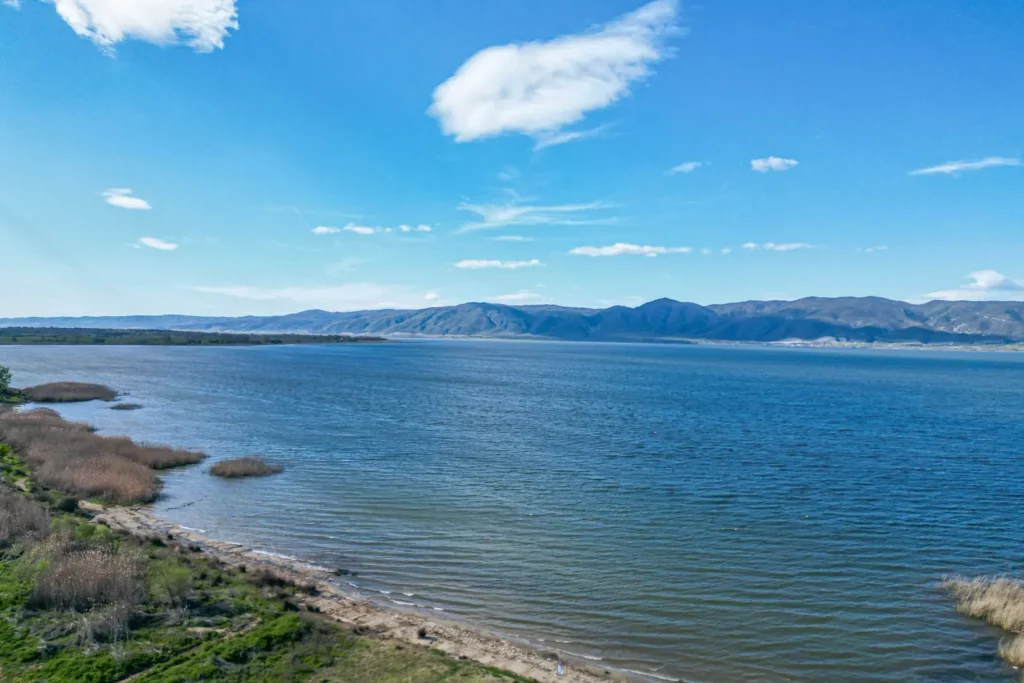
Lake Volvi
Lake Volvi, the second largest natural lake in Greece, is located east of Thessaloniki and offers a unique destination for nature lovers and historians. The area around the lake is full of natural beauty and rich fauna, and visitors can enjoy activities such as hiking, bird watching and boating. The lake, which has been designated a wetland of international importance, combines history and nature in the best possible way. A walk around its calm waters offers the opportunity to discover the value of the landscape and the mythology behind the Volvi.

Archaeological Site of Amphipolis
Amphipolis, with its mysterious charm, connects the past with the present, revealing treasures of ancient Greek and Macedonian history. Next to the river Struma, this ancient city was a meeting point of cultures and a strategic gateway to Macedonia. From the imposing walls and sanctuaries to the mythical Lion of Amphipolis, the area keeps alive the stories of a glorious era. Every corner hides secrets and revelations that take the visitor to a world where ancient art and political splendor coexist masterfully.
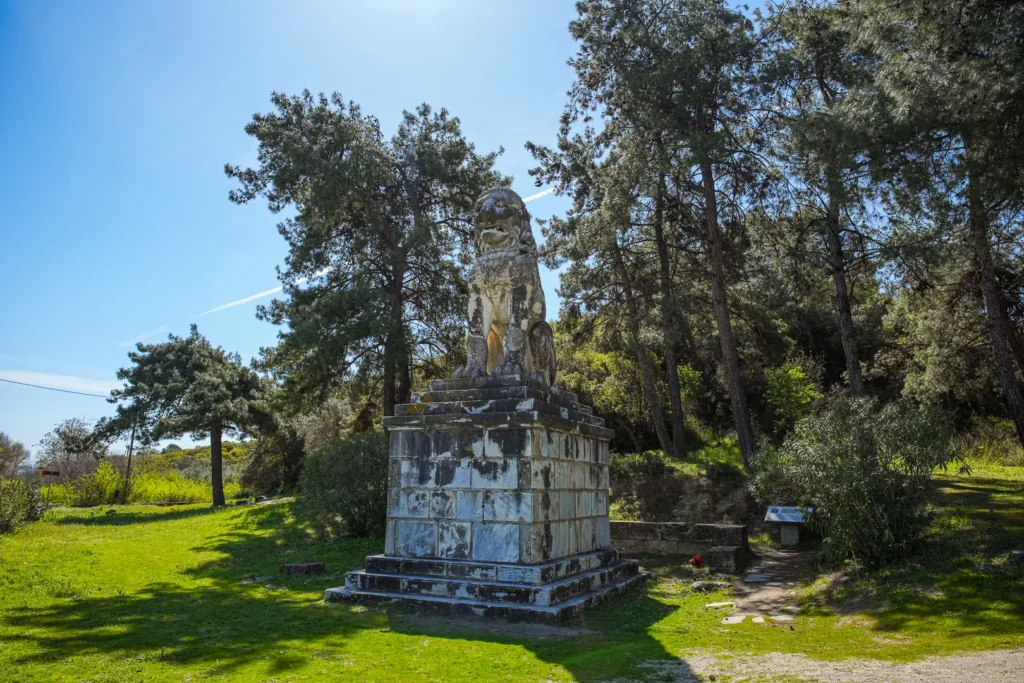
Lion of Amphipolis
The Lion of Amphipolis is a monument of the 4th century BC, dedicated to the memory and glory of Laomedon, remarkable triarch of Alexander the Great. It is assumed that it was located at the top of the Mound of Kasta, a view that is disputed. The statue, 8 meters high including the pedestals, was discovered in sections by soldiers and completed in 1937. Considered an exceptional example of art of the period, Leo is associated with beliefs, such as the absence of his tongue, which is said to hold the secret of the tomb.

Kasta Tomb
The Tumulus Kasta in Amphipolis is an impressive burial hill of the 4th century BC, which stands out for its size and decoration. Its perimeter, about 497 meters, surrounded by a monumental enclosure of thasitic marble. Excavations have revealed sphinxes, caryatids, mosaic flooring and a large tomb. Although it is not certain who the deceased was, it is presumed that he was an important person of Alexander the Great’s time. The mound remains a symbol of Macedonia’s cultural heritage, attracting international interest and sparking theories about its historical background.

The cave of Alistrati
The Cave of Alistrati is considered one of the most beautiful and largest in Greece, perhaps even in Europe, with impressive natural formations. It is located six kilometers southeast of Alistrati, in the “petroto” area. The decoration of the cave includes huge stalactites and stalagmites in various colours, as well as rare eccentrics that form ‘defying’ gravity. Impressive stalactites hanging from the ceiling are 15 metres long, offering a unique view.

Varvara Waterfalls
Varvara Waterfalls, located just 25 minutes from Vrasna, is an excellent destination in Halkidiki, on the route between Olympiada and Varvara. The landscape, full of dense vegetation of iatami, beech and ash trees, is home to two impressive waterfalls with crystal clear water falling from a great height. The coolness offered by the trees and the sound of the water create the perfect atmosphere for relaxing and enjoying nature, especially in summer. It is an ideal spot for hiking, photography and for those seeking tranquility and natural beauty away from the hustle and bustle of everyday life.

Ancient Stageira
Ancient Stageira, the birthplace of the great philosopher Aristotle, is located in the area of Liotopi, near Olympiada in Halkidiki. It was founded in 655 BC by Ionian colonists and experienced great moments in antiquity, participating in the First Athenian League and during the Peloponnesian War. However, in 349 BC, the city was destroyed by Philip II, only to be later re-established by him in honor of Aristotle. Today, Stageira is a unique destination for history lovers and nature enthusiasts. The archaeological site is filled with ruins that testify to the city’s former glory, and walking along the paths by the sea is simply enchanting.

Redina Castle
The Castle of Rentina, built on a hill, is one of the most important historical destinations of the region. Its construction began during the Byzantine period and was continued by the Ottomans. Today, the ruins of the castle bear witness to its historical value, with its walls and towers rising imposingly in the area. Visitors can tour the ruins, admire the unique view and feel the atmosphere of the past. The Castle of Redina is a journey through time, offering a fascinating experience that combines history and natural beauty.

Vrasna Museum: Minerals & Rocks of Northern Greece - Folklore
The Folklore Museum of Vrasna, which is housed in the renovated old primary school of 1934, is an important cultural resource for the region, presenting the local tradition through exhibits such as traditional costumes, agricultural tools, folk musical instruments and household utensils. In addition, it hosts a unique exhibition of Rocks, Minerals and Crystals, donated by Michalis Vlachos and Ute Gerhard, with a collection from various regions of Northern Greece. The museum opens its doors for guided tours and educational programs, enabling visitors to explore the rich cultural heritage of the region.

Folklore Museum of Asprovalta
The Minor Asia Cultural Association of Renkiotes in Asprovalta preserves heirlooms of folkloric and historical interest originating from the homeland of the inhabitants of Asprovalta, Erenkioi, next to ancient Troy, in the Dardanelles region. Their exhibition took place in the past, but it is not currently possible.
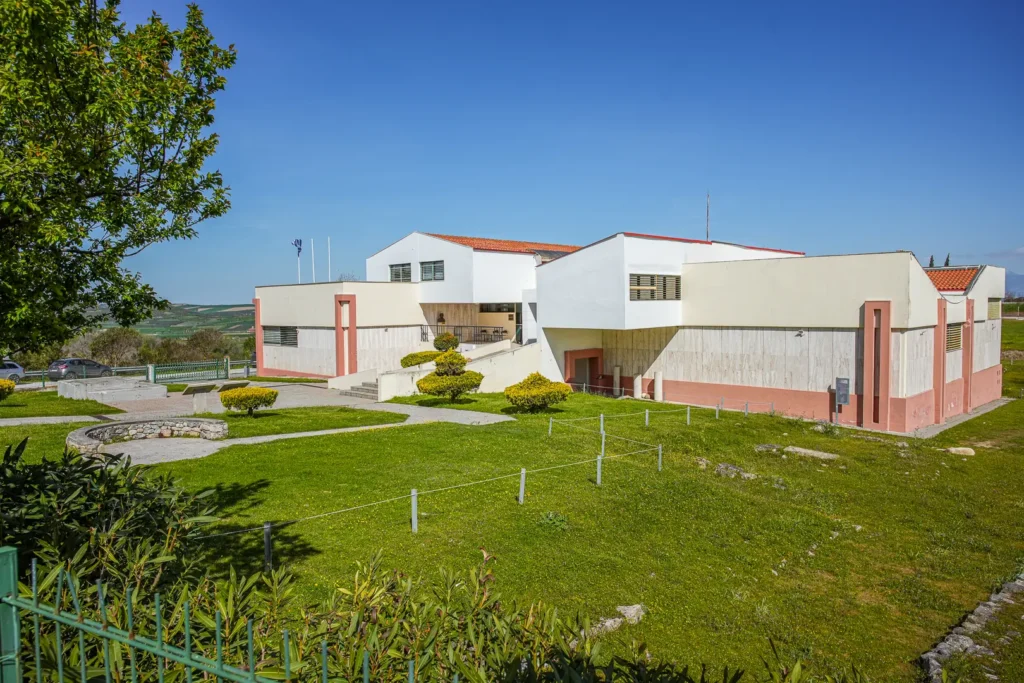
Archaeological Museum of Amphipolis
The Archaeological Museum of Amphipolis reveals the history of the region from the prehistoric to the Byzantine period. Among the important findings that hosts, include the tomb of General Brasidas and the silver urn, found during the construction of the museum. Its collections cover all historical periods, with particular emphasis on the findings of Amphipolis. The column of Amyntas, the golden wreath and the mosaics of the Roman and Byzantine era bring to life the stories of ancient civilizations, offering a unique experience to visitors.
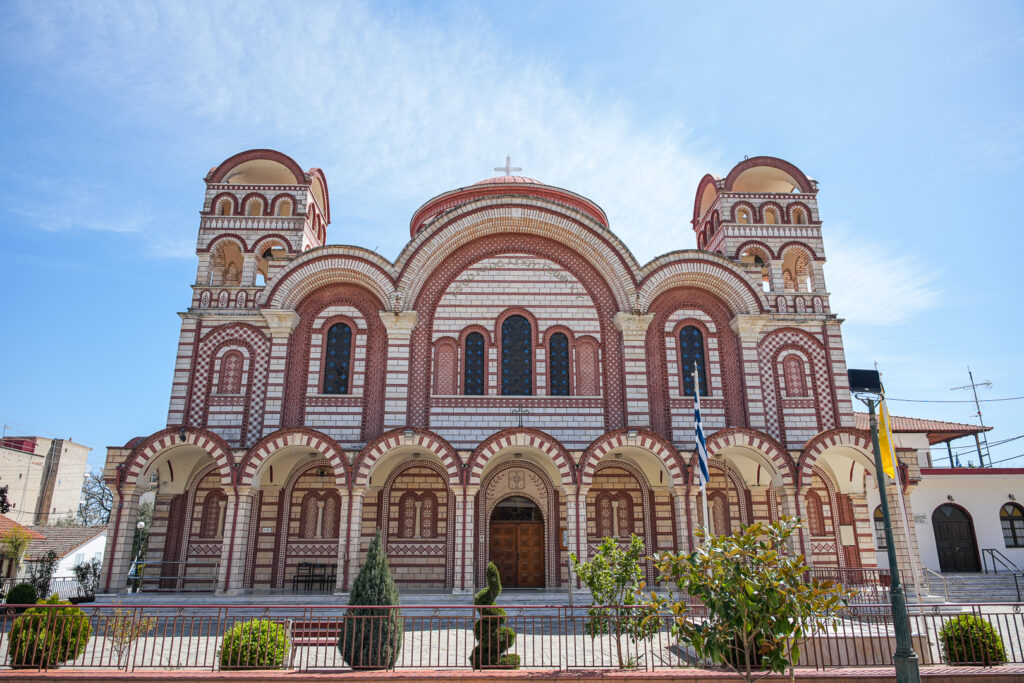
Church of St. George
The Church of St. George in Asprovalta is a symbol of faith and historical memory for the local community, which founded it in 1928, with the help of refugees and their compatriots from America. With Byzantine-style architecture and an exquisite wood-carved iconostasis, the church houses important sacred relics, such as icons of Agios Georgios and Panagia from the 16th-17th centuries and relics of saints. The highlight of the year is the feast of St. George, when the refugees from Renkio return to honour his memory and offer their vows to the icon of the saint.

The Holy Church of Saint George in Vrasna
The Holy Church of Saint George in Vrasna is located in a historically significant area with a rich religious tradition. The church, which is a three-aisled cross-shaped basilica with a dome, was built on the site of an older church. The bell tower from the old church is preserved, bearing a marble inscription with the date of March 30, 1868. The church belongs to the Holy Diocese of Serres and Nigrita and is an important religious center for the local community, while the surrounding area retains traditional features that reflect the history and cultural heritage of Vrasna.
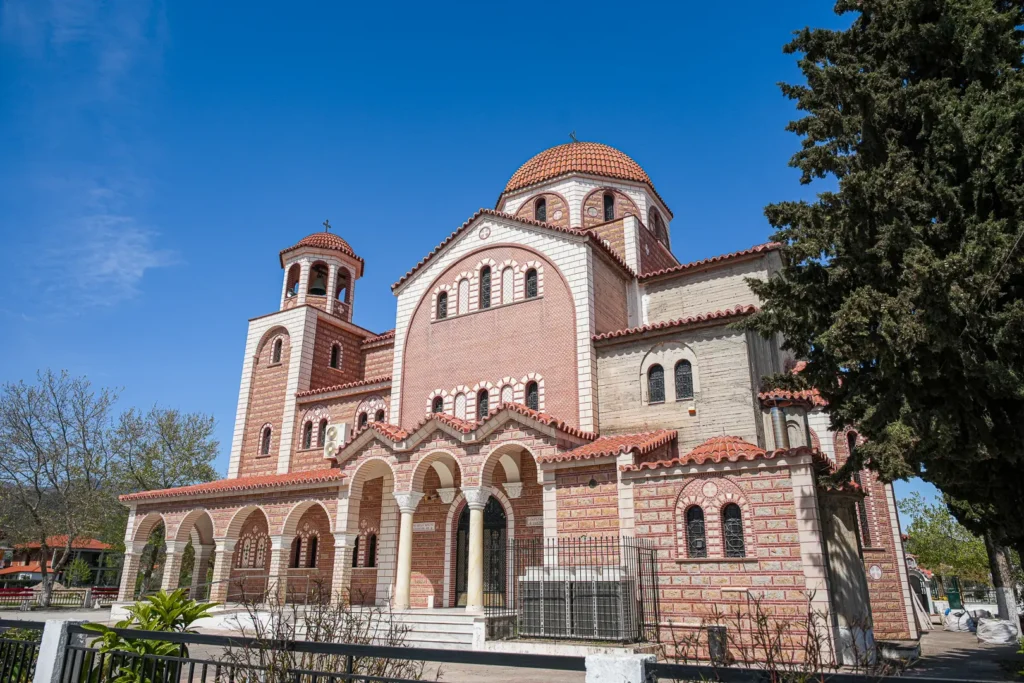
Church of Constantine and Helen
The Church of Saints Constantine and Helen of Nea Vrasna, erected on 18 June 1991, is a spiritual centre for the local community. The inauguration took place on 28 May 2000 by the late Metropolitan Maximus of Serres and Nigriti. The church, cruciform with a dome, apart from its normal worship life, undertakes important charitable work. By organizing catechetical schools and Bible study circles, as well as visits to people with spiritual and material needs, the parish offers practical help and spiritual support to the faithful.

Holy Monastery of St. George on Kerdylia Mountains
The Holy Monastery of Saint George, built in the middle of the 16th century on the Kerdylia Mountains above Asprovalta, is a true jewel of Byzantine architecture. The church follows the Athonite type, with a cruciform design and a majestic cross dome, while its external facades are decorated with serrated bands and blind arches. The monastery, which was probably a part of the Monastery of Esfigmenos, is home to excellent frescoes by Antonios, a painter from Mount Athos. Today, although abandoned, it remains a landmark for the faithful, with annual services and stunning views of the Strymonikos Gulf.
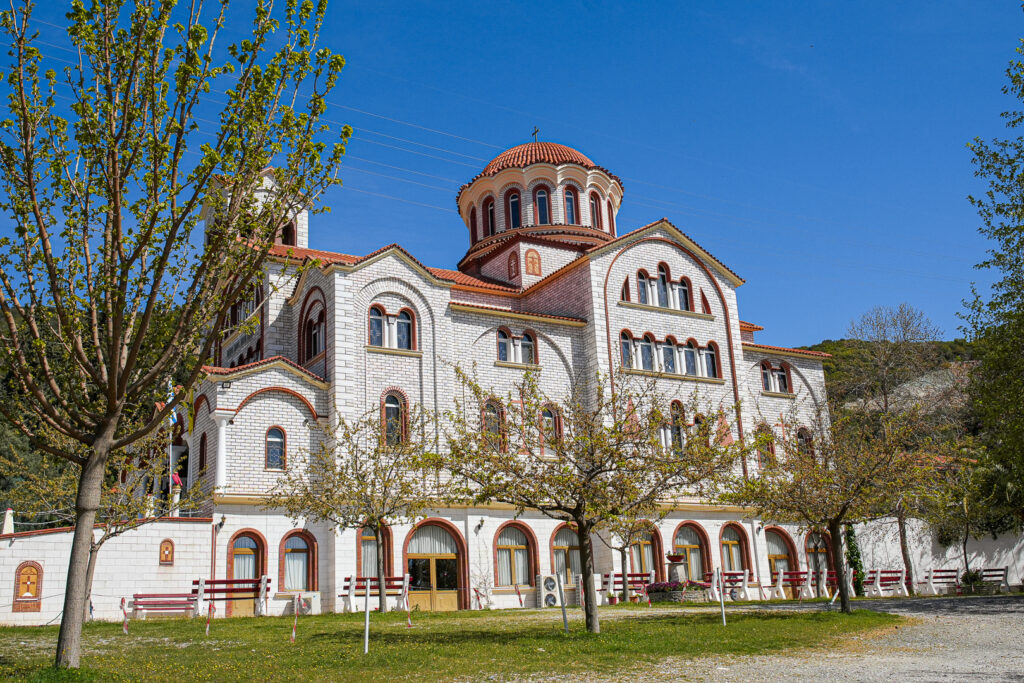
Orthodox Christian Brotherhood Lydia
The Orthodox Christian Brotherhood “Lydia,” founded in 1958 by Archimandrite Father Pavlos Papadopoulos, is a monastic, missionary community operating in Northern Greece. It consists of members who aim to sanctify themselves and spread Christian values in society. Its activities include the Camp “The Joy of Children,” the magazine “Holy Lydia,” the Radio Station “Lydia the Philippian,” as well as catechism schools and Bible study circles. The goal of the Brotherhood is the spiritual cultivation of the faithful and the dissemination of the Gospel through modern media.

Saint Marina Church
The post-Byzantine Church of Saint Marina is located in Modi, near Asprovalta, and was built in the mid-18th century by the villagers. The church is renowned for its miraculous powers and has unique architecture, linked to various traditions, such as the discovery of the icon of Saint Marina by the priest Papa-Themeli or a Turkish official. The church was constructed in 1869, and the Sultan granted it land as a gift. Saint Marina is celebrated on July 17 with a feast, and historical traditions, such as the appearance of a deer as an offering, enhance the religious atmosphere of the area.

Mount Athos
Mount Athos, the easternmost peninsula of Chalkidiki, is a region rich in history and religious significance, covered by Mount Athos itself, which rises 2,033 meters above sea level. The area is self-governing, falling under the Ministry of Foreign Affairs and the Ecumenical Patriarchate of Constantinople. It consists of 20 self-governing regions, each with its own prominent monastery and monastic settlements surrounding it. Access requires prior planning, including communication with the Pilgrims’ Bureau in Thessaloniki for the issuance of a permit and accommodation booking. For those not wishing to visit the monasteries, summer boat routes are available from Ouranoupoli.
